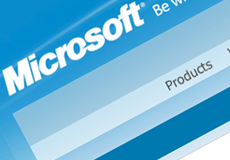Unlike Google, Microsoft is not trying to connect the entire Earth by using drones or balloons. Instead, the company hopes to utilize television white space, an unused part of the broadcast spectrum, to provide more Internet access to people living in Africa. After running cost-effective pilot programs in the U.S. and Kenya, Microsoft has found that the challenge for Microsoft’s 4Afrika initiative is to persuade governments to lift regulations to allow them to utilize white space.
 The Federal Trade Commission made television white space available license-free to U.S. broadcasters in 2010. After that, Microsoft launched pilot programs in Redmond, Washington; Montevideo, Uruguay; and Cambridge, England, to use white spaces — or the gaps between licensed television signals — to send low power signals that could provide Internet access for large, and often rural, areas.
The Federal Trade Commission made television white space available license-free to U.S. broadcasters in 2010. After that, Microsoft launched pilot programs in Redmond, Washington; Montevideo, Uruguay; and Cambridge, England, to use white spaces — or the gaps between licensed television signals — to send low power signals that could provide Internet access for large, and often rural, areas.
As part of Microsoft’s 4Afrika Initiative, the company built solar-powered stations to transmit high-speed wireless broadband signals within a 13-kilometer range. Kenyan users ended up paying about five dollars per month for the broadband service.
Microsoft is particularly interested in improving education, healthcare, and government services through connectivity. According to a video on the tech giant’s website, 80 percent of Kenyans who previously did not have broadband access, some of whom still do not have electricity, now have the power of the World Wide Web at their hands.
In the coming months, Microsoft hopes to expand its white space project to other locations in Eastern and Southern Africa, but first, the company will need more support from African governments that currently do not allow companies to use television white space. Success in the Kenya pilot program has already influenced some of the white space legislation in the UK, Singapore, and Canada, according to Quartz.
“This is just another example of how Africa can accelerate technology for the world,” said Paul Garnett, Microsoft’s head of technology policy.

No Comments Yet
You can be the first to comment!
Sorry, comments for this entry are closed at this time.